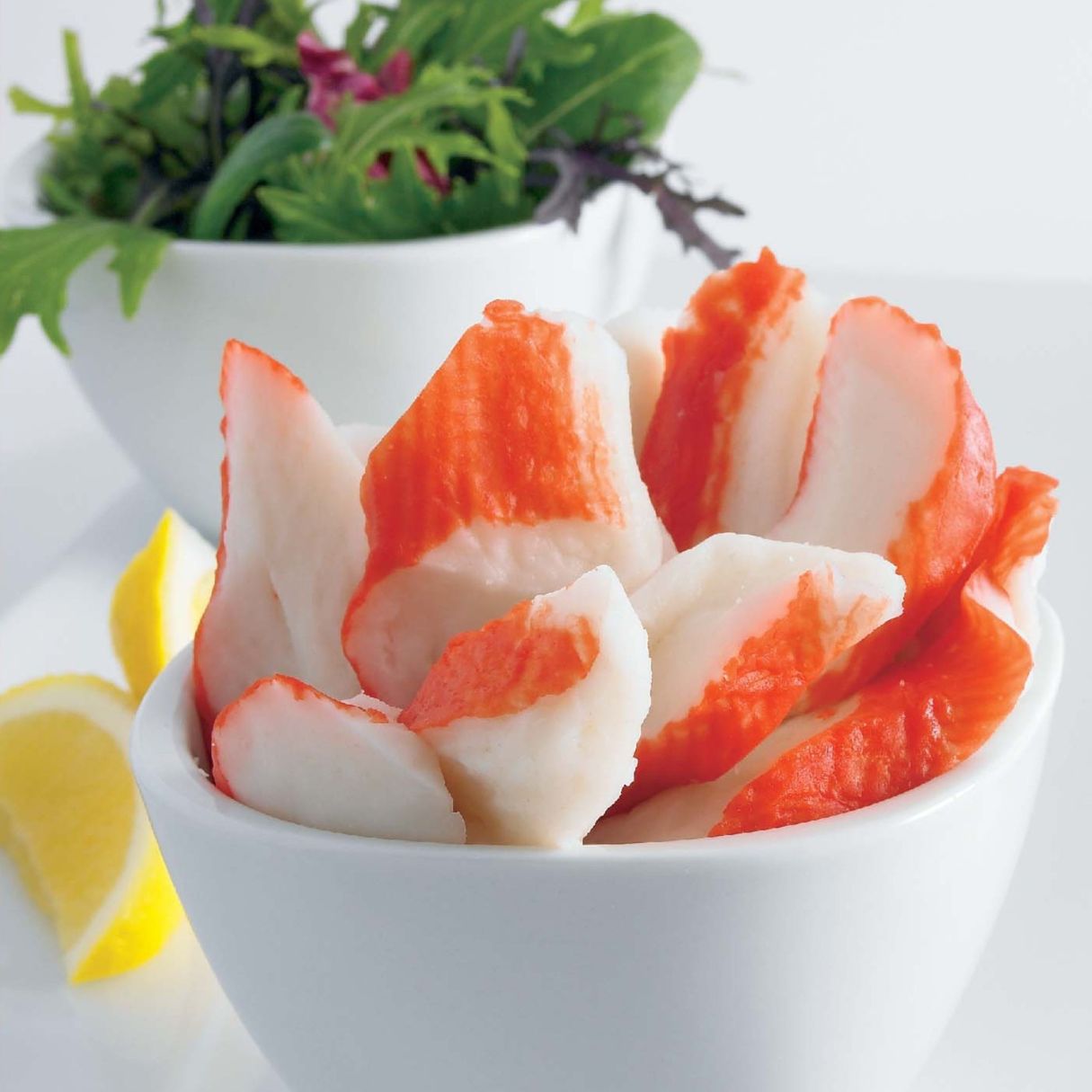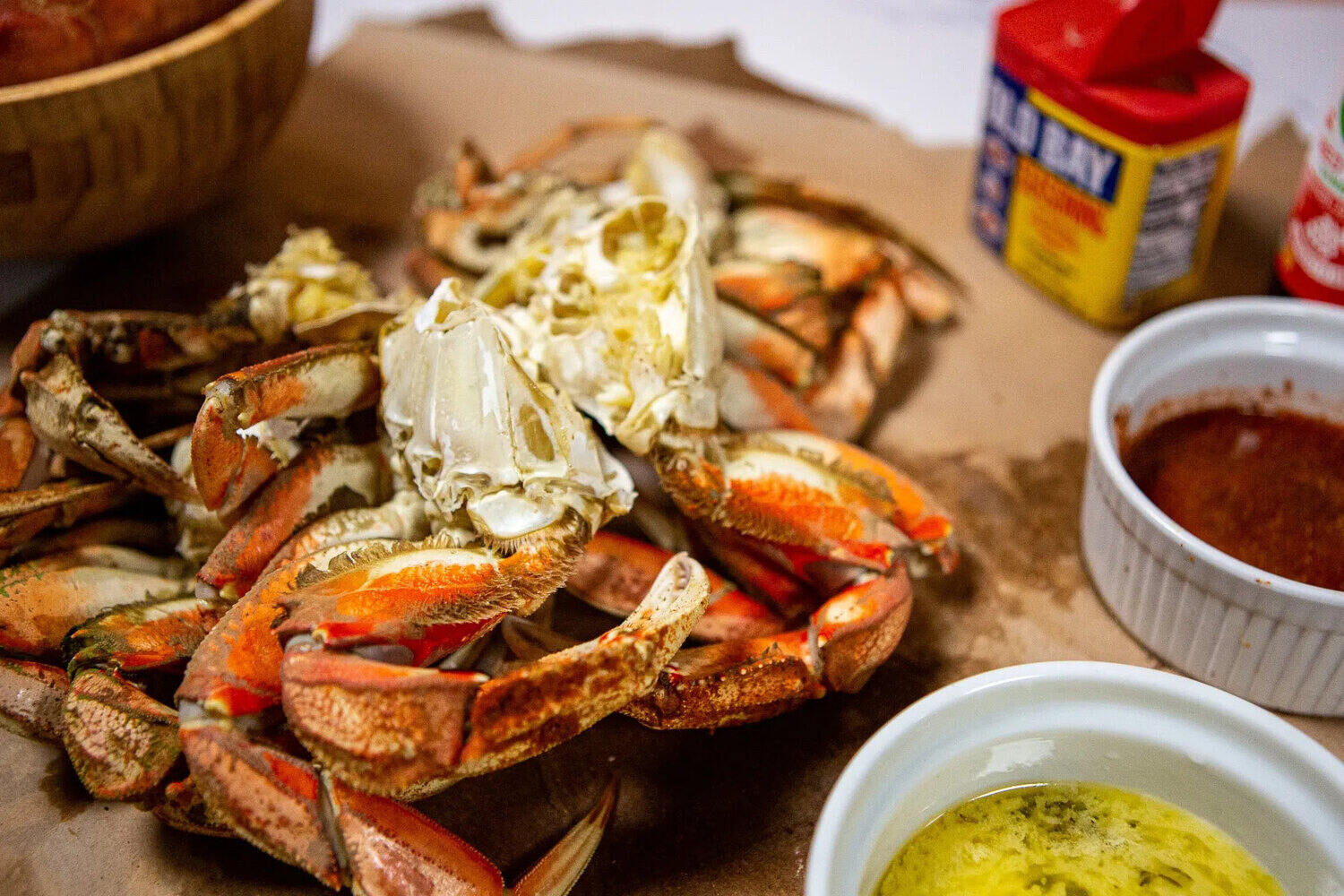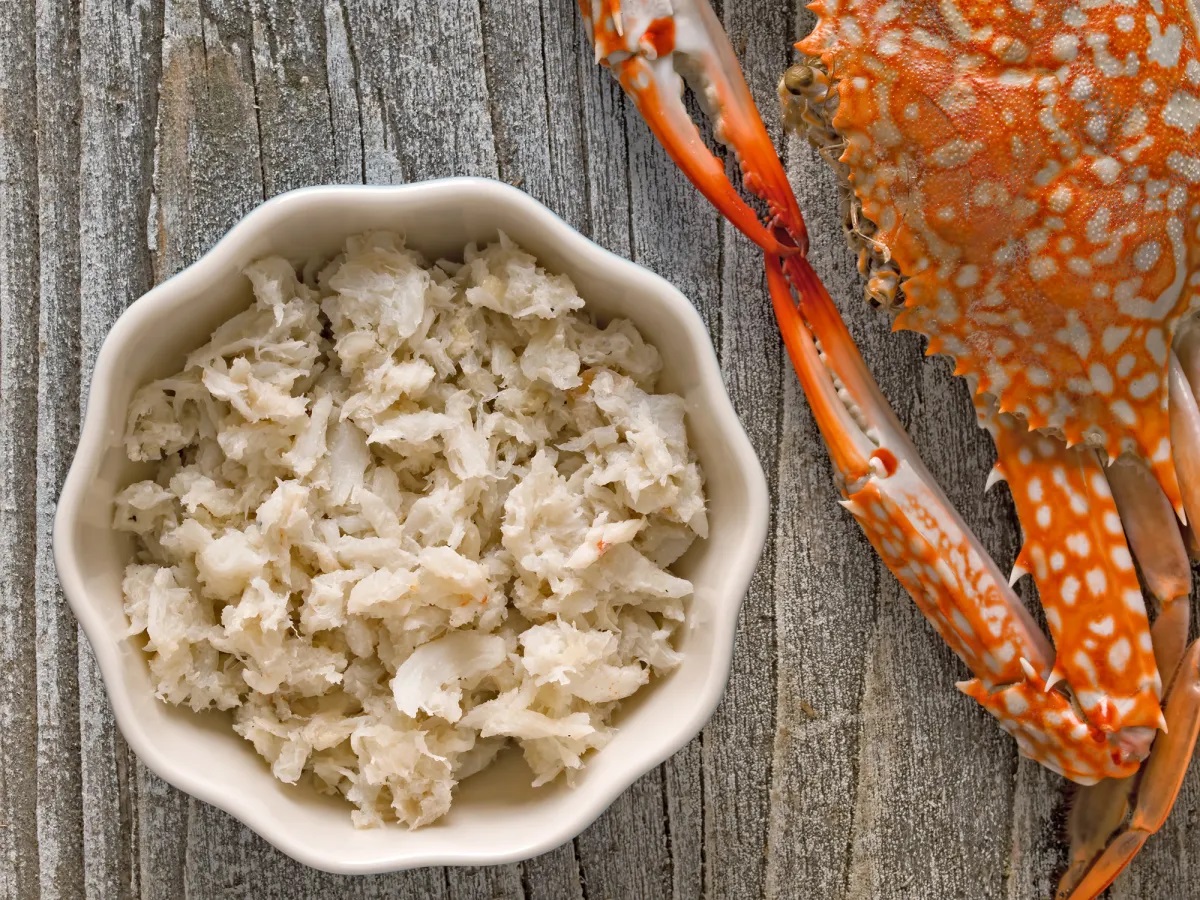

Articles
How To Store Imitation Crab
Modified: December 7, 2023
Learn the best methods for storing imitation crab in this informative article. Keep your seafood fresh and delicious with our helpful tips.
(Many of the links in this article redirect to a specific reviewed product. Your purchase of these products through affiliate links helps to generate commission for Storables.com, at no extra cost. Learn more)
Introduction
Welcome to our comprehensive guide on how to store imitation crab! Whether you’re an avid sushi lover, a fan of seafood salads, or enjoy using imitation crab in various recipes, it’s important to know the proper storage methods to maintain its freshness and flavor. Imitation crab, also known as surimi, is a popular and affordable alternative to real crab meat. It’s made from a blend of fish, typically pollock, that has been processed and flavored to mimic the taste and texture of crab meat. As with any perishable food item, proper storage is key to preserving the quality and safety of imitation crab.
In this article, we’ll walk you through the best practices for storing imitation crab, whether you’re keeping it in the refrigerator for short-term storage or freezing it for longer shelf life. We’ll also provide you with some handy tips and tricks to ensure that your imitation crab stays delicious and ready for your next culinary adventure.
Key Takeaways:
- Proper storage of imitation crab is crucial for maintaining its freshness and flavor. Whether refrigerating or freezing, use airtight containers, check expiration dates, and avoid cross-contamination to ensure optimal quality.
- Avoid common mistakes when storing imitation crab, such as improper sealing, storing for too long, and thawing and refreezing. Stay vigilant for signs of spoilage and follow recommended storage temperatures for a delightful culinary experience.
Read more: How To Store Oysters
Understanding Imitation Crab
Before we delve into the proper storage methods, let’s take a moment to understand what imitation crab is and why it has gained popularity in the culinary world. Imitation crab is a versatile ingredient that is widely used in various dishes, from sushi rolls and seafood salads to pasta dishes and appetizers.
The main ingredient in imitation crab is surimi, which is a Japanese word that translates to “ground meat.” Surimi is typically made by finely grinding and processing a white fish, such as pollock, until it has a paste-like consistency. To enhance the flavor and texture, flavorings, starches, and binders are added to the surimi mixture. These ingredients work together to give imitation crab a similar taste and texture to real crab meat.
Imitation crab is a cost-effective alternative to real crab, making it more accessible to a wide range of consumers. It also has a longer shelf life than fresh crab, which makes it a convenient choice for those who may not have easy access to fresh seafood markets. However, it’s important to note that imitation crab is a processed food product and may not provide the same nutritional value as real crab meat.
When it comes to storage, imitation crab has specific requirements to maintain its quality and freshness. Let’s explore the best storage methods to ensure that your imitation crab stays tasty and safe to consume.
Proper Storage Methods:
When it comes to storing imitation crab, there are two main methods you can use: refrigeration and freezing. The choice of storage method will depend on how long you need to store the imitation crab and how quickly you plan to use it.
Refrigeration:
If you only need to store the imitation crab for a short period, refrigeration is the best option. Here’s what you need to do:
- Remove the imitation crab from its original packaging and transfer it to an airtight container or resealable plastic bag. This will help to prevent any unwanted odors from seeping into the crab.
- Place the container or bag in the coldest part of your refrigerator, such as the bottom shelf. The temperature should be set to around 32°F to 39°F (0°C to 4°C).
- Make sure to consume the imitation crab within 2 to 3 days of refrigeration. After this time, the quality and flavor may start to deteriorate.
By following these steps, you can preserve the taste and texture of the imitation crab for a short duration.
Freezing:
If you want to extend the shelf life of your imitation crab and store it for a longer period, freezing is the recommended method. Here’s how you can properly freeze the imitation crab:
- Remove the imitation crab from its original packaging and place it in an airtight freezer-safe container or resealable freezer bag. It’s essential to wrap it tightly to prevent freezer burn and maintain its freshness.
- Label the container or bag with the date of freezing to keep track of its age.
- Ensure that your freezer maintains a temperature of 0°F (-18°C) or below for optimal storage.
- When you’re ready to use the imitation crab, gradually thaw it in the refrigerator overnight. Avoid thawing it at room temperature to prevent bacterial growth.
- Once thawed, do not refreeze the imitation crab. Consume it within 2 to 3 days for the best taste and texture.
Freezing the imitation crab will allow you to keep it for several months without sacrificing its quality. It’s an excellent option if you want to stock up and have a readily available supply of imitation crab for your favorite recipes.
Read more: How To Store Scallops
Tips for Storing Imitation Crab
Proper storage of imitation crab is crucial to maintain its quality and safety. Here are some helpful tips to ensure that your imitation crab stays fresh and delicious:
- Check the expiration date: Before purchasing imitation crab, always check the expiration date to ensure that it hasn’t expired. Freshness is key to enjoying the best flavor and texture.
- Use airtight containers: Whether you’re refrigerating or freezing the imitation crab, make sure to use airtight containers or resealable bags. This will prevent the crab from absorbing any odors from other foods in your refrigerator or freezer.
- Separate into smaller portions: If you plan to freeze the imitation crab, consider separating it into smaller portions before freezing. This way, you can thaw only the amount you need, minimizing waste and ensuring each portion remains fresh.
- Avoid cross-contamination: Be cautious when handling imitation crab to prevent cross-contamination. Make sure to use separate utensils and cutting boards when preparing other ingredients to avoid any cross-contamination with raw seafood or meat.
- Don’t leave it at room temperature: Imitation crab is a perishable food item, so it should not be left at room temperature for an extended period. Always refrigerate or freeze it promptly after use to maintain its freshness.
- Rotate your stock: If you frequently purchase imitation crab, remember to rotate your stock. Use the older packages first to avoid any spoilage or waste.
- Keep an eye on the color and smell: When using imitation crab, be observant of any signs of spoilage. If the color changes significantly or if it develops an off-putting odor, it’s best to discard it to avoid any foodborne illnesses.
- Store it separately: If you’re storing the imitation crab alongside other refrigerated or frozen items, consider placing it on a separate shelf or in a designated area. This will help prevent any accidental contamination and ensure that the crab stays in optimal condition.
By following these tips, you can maximize the shelf life of your imitation crab and enjoy its fresh taste and texture in your favorite recipes.
Store imitation crab in the coldest part of the refrigerator, ideally below 40°F (4°C). Keep it in its original packaging or an airtight container to prevent it from absorbing other odors. Use within 2-3 days of opening.
Common Mistakes to Avoid
When it comes to storing imitation crab, there are a few common mistakes that people often make. By being aware of these mistakes, you can ensure that your imitation crab stays fresh and safe to consume:
- Not properly sealing the packaging: Whether you’re storing the imitation crab in the refrigerator or freezer, it’s essential to properly seal the packaging. Failing to do so can lead to exposure to air, which can cause the crab to become dry and lose its flavor.
- Storing it for too long: Imitation crab is a perishable food item and should not be stored for an extended period. Make sure to check the expiration date and consume it within the recommended timeframe. Storing it for too long can affect its quality and increase the risk of foodborne illnesses.
- Thawing and refreezing: Once you have thawed the imitation crab, it’s crucial not to refreeze it. Thawing and refreezing can compromise the texture and flavor of the crab, resulting in a less enjoyable eating experience.
- Not properly labeling: Whether you’re storing the imitation crab in the refrigerator or freezer, it’s important to label the packaging with the date of storage. This will help you keep track of how long it has been stored and ensure that you use it within the recommended timeframe.
- Storing it near strong-smelling foods: Imitation crab can easily absorb odors from other foods. Avoid storing it near strong-smelling foods, such as onions or garlic, to prevent any unwanted flavors from transferring to the crab.
- Not using proper containers: Using the wrong type of container for storing imitation crab can lead to freezer burn or moisture loss. Make sure to use airtight containers or resealable bags specifically designed for freezer storage.
- Not following recommended storage temperatures: It’s important to maintain the proper storage temperature for both refrigeration and freezing. Failure to do so can affect the quality and safety of the imitation crab.
- Ignoring signs of spoilage: Always be attentive to any changes in color, texture, or odor of the imitation crab. If you notice any significant changes or suspect that the crab has spoiled, it’s best to discard it to avoid any potential health risks.
By avoiding these common mistakes, you can ensure that your imitation crab stays fresh and enjoyable for a longer period.
Conclusion
Properly storing imitation crab is essential to maintain its freshness, flavor, and safety. Whether you’re storing it in the refrigerator for a short period or freezing it for longer-term storage, following the correct methods will ensure that your imitation crab stays delicious and ready to use.
Remember to transfer the imitation crab to airtight containers or resealable bags, whether refrigerating or freezing. Utilize the coldest part of your refrigerator for short-term storage and maintain a temperature of 0°F or below in your freezer for longer-term storage.
Additionally, keep in mind some essential tips, such as checking the expiration date, avoiding cross-contamination, and properly labeling the packaging. These practices will help you maintain the quality and safety of your imitation crab.
Be aware of common mistakes, such as improper sealing of packaging, storing the crab for too long, and thawing and refreezing. By avoiding these mistakes, you can ensure optimal taste and texture when using your imitation crab in recipes.
Stay vigilant for any signs of spoilage, such as changes in color, texture, or odor. If you notice any significant alterations, it is best to discard the imitation crab to avoid any potential health risks.
By following these guidelines and practicing proper storage techniques, you can enjoy your imitation crab in various dishes, from sushi rolls and seafood salads to pasta dishes and beyond. Whether you’re an occasional consumer or a frequent user, the proper storage of imitation crab will guarantee a delightful culinary experience every time.
Frequently Asked Questions about How To Store Imitation Crab
Was this page helpful?
At Storables.com, we guarantee accurate and reliable information. Our content, validated by Expert Board Contributors, is crafted following stringent Editorial Policies. We're committed to providing you with well-researched, expert-backed insights for all your informational needs.















0 thoughts on “How To Store Imitation Crab”